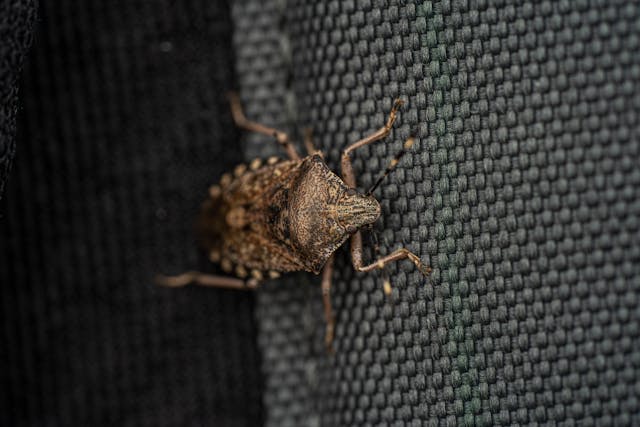Float therapy centers are designed to offer calm, relaxation, and escape from the outside world. Clients expect a peaceful, clean, and safe space—one where every detail, from lighting to scent to sound, contributes to their experience. However, even in the most serene environments, pest issues can quietly undermine everything you’ve worked to create.
Insects, rodents, and other pests are more than just a nuisance—they can compromise hygiene, damage equipment, and destroy your business’s reputation. A single pest sighting can shatter a client’s trust, especially in an industry built around wellness and cleanliness. That’s why pest control should be a core part of your operational strategy—not just a reaction when something goes wrong.
If you’re operating a float therapy center or planning to open one, here’s what you need to know about maintaining a pest-free environment while preserving the relaxing ambiance your clients expect.
Why Float Therapy Spaces Are Vulnerable to Pests
At first glance, a float center might seem like an unlikely place for pests to thrive. The pods are enclosed, the environment is carefully controlled, and the facilities are kept spotlessly clean. However, these spaces still carry a few features that can make them attractive to certain pests if preventive measures aren’t in place.
Humidity is one of the biggest risk factors. While float tanks themselves are filled with highly saline water that doesn’t support life, the surrounding environment can become humid due to client showers, damp towels, and water vapor. Excess moisture, especially if not properly vented or dried, attracts cockroaches, silverfish, and other moisture-loving insects. If the facility includes saunas, bathrooms, or small locker rooms, this risk is even higher.
Organic materials, like cotton towels, floor mats, and even wooden furniture, can harbor pests if not cleaned or stored properly. And because float therapy spaces are often quiet and dimly lit, rodents or insects can go unnoticed for long periods of time—until a client spots them, and the damage is already done.
Establishing a Consistent Cleaning and Inspection Routine
Cleanliness is at the core of a float center’s brand—and it’s also the best defense against pests. Daily cleaning protocols should be thorough and consistent. All areas, including treatment rooms, common areas, and back-of-house storage spaces, should be wiped down and vacuumed regularly. Floors, baseboards, and corners should be checked for crumbs, hair, and moisture buildup.
Pay special attention to the spaces behind and under furniture or fixtures, as these dark, hidden areas are prime spots for insects or rodents to nest. Bathrooms and shower rooms should be sanitized multiple times a day, especially around drains and tile grout where moisture tends to collect. Trash should be taken out daily, and all bins should be sealed tightly to avoid attracting bugs.
As part of your routine, conduct regular visual inspections of your facility, especially around baseboards, corners, vents, and utility lines. Look for signs of droppings, chew marks, or insect debris. Early detection is key to avoiding full-blown infestations.
Controlling Humidity and Moisture Levels
Moisture control is essential in any wellness facility that uses water. Even though float tanks themselves are not pest breeding grounds due to their high salt concentration, the surrounding environment can become humid—especially in poorly ventilated rooms.

Install dehumidifiers or ensure your HVAC system includes humidity control features. Proper ventilation in shower and locker areas is equally important. Exhaust fans should run efficiently and continuously during operating hours, and tanks should be kept in well-ventilated rooms where condensation doesn’t linger on walls or ceilings.
After each client session, use dry mops or towels to absorb excess water from floors. Avoid letting wet towels or mats sit in baskets for extended periods, as they become an ideal breeding spot for insects. Store used linens in sealed containers until they can be washed.
Sealing Entry Points and Preventing Intrusion
Many pest problems begin with small entry points that go unnoticed. Rodents can squeeze through gaps as small as a coin, and insects can slip through cracks in doorframes or around windows. These vulnerabilities are especially common in older buildings or spaces that have been retrofitted for spa or wellness use.
Conduct a detailed inspection of your facility’s exterior and seal any visible cracks, crevices, or gaps around plumbing, vents, or utility conduits. Install door sweeps and weather stripping to prevent pests from slipping in through under-door gaps. Screens on windows and vents should be inspected regularly and repaired if damaged.
Be mindful of doors that open frequently for deliveries or foot traffic. Using automatic doors or installing vestibules can help limit the chances of pests wandering in unnoticed. Every point of access should be tightly secured and maintained regularly.
Safe Pest Control Solutions for a Wellness Setting
Using harsh chemical pesticides in a wellness space can compromise air quality and make clients uncomfortable. Many float therapy customers are sensitive to artificial scents and chemicals, which means that pest control efforts need to be discreet, eco-friendly, and wellness-safe.
Look for pest control providers who specialize in natural or low-toxicity solutions. Integrated Pest Management (IPM) is an excellent approach for float centers—it emphasizes prevention, inspection, and targeted treatments rather than widespread chemical use. For example, using traps or physical barriers instead of sprays ensures that you can eliminate pests without affecting your center’s atmosphere.
Make sure any pest control activities are done after hours and that treated areas are clearly marked, ventilated, and safe before reopening to the public.
Educating Staff for Long-Term Prevention
Your team plays a key role in maintaining a pest-free space. All staff should be trained to recognize the early signs of pest issues and understand the importance of reporting concerns immediately. Establish a clear process for documenting and addressing potential sightings or sanitation problems.
Train your staff on proper towel handling, storage practices, and restroom cleanliness. The more proactive your team is, the less likely you’ll be caught off guard by a sudden infestation. Encourage a culture of cleanliness where every employee takes ownership of keeping the space spotless and client-ready.
Final Thoughts
A clean, calm float therapy environment is essential to building trust with your clients and maintaining a successful wellness business. But creating that serene space involves more than soft music and dim lights—it requires diligent pest prevention and a smart, proactive approach to cleanliness.
By controlling humidity, sealing entry points, using wellness-safe pest control, and training your staff, you can preserve the peaceful atmosphere your clients expect while keeping your facility free of unwanted visitors. In float therapy, where every detail matters, even the smallest signs of pests can disrupt the experience. Stay ahead of the issue, and your space will remain a sanctuary—not just for clients, but for your business’s long-term success.
